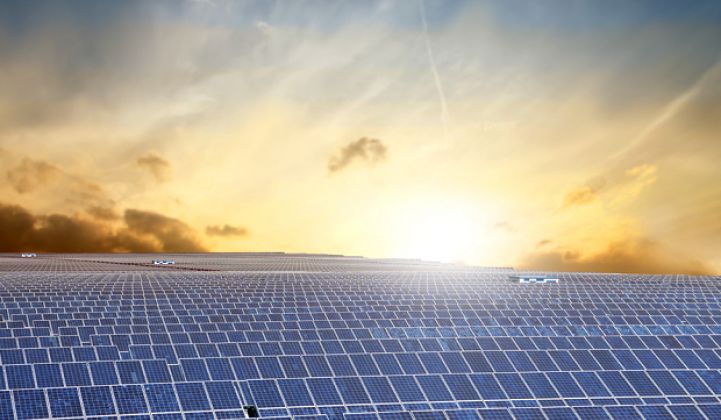With the advent of $1.00-per-watt (DC) pricing for utility fixed-tilt PV systems, the solar industry has crushed the SunShot Program's $1.00-per-watt goal for 2020 three years early.
In early 2011, Steven Chu, Secretary of the U.S. Department of Energy (and a scientist), along with Dick Swanson, founder of SunPower, christened the DOE's SunShot initiative. Swanson cited DOE's early support of SunPower as a factor in SunPower's success.
At the time, $1.00 per watt seemed more aspirational than real -- but one needs a North Star. The intrepid analysts at GTM Research were tracking utility solar at close to $4.00 per watt in early 2011.
The SunShot initiative hoped to reduce the total costs of PV solar energy systems by about 75 percent so that they were cost-competitive with other forms of energy without subsidies before 2020. Chu said that SunShot would work to bring down the cost of solar -- by focusing on four main pillars:
- Technologies for solar cells and arrays
- Power electronics to optimize the performance of the installation
- Improvements in solar manufacturing processes
- Installation, design and permitting for solar energy systems
In fact, steep reductions in system pricing have stemmed not just from modules, but also from price reductions in inverters, trackers and even labor costs. It's only stubborn soft costs such as customer acquisition that have actually risen.
And so here we are -- SunShot mission accomplished. However, MJ Shiao, director of research at GTM, recently pointed out on The Interchange that these are EPC prices, and "in many cases, there is still an asset developer's margin on top of this."
Shiao notes that the drop in module pricing from 60 cents per watt last year to 30 cents per watt this year represents "a huge reduction for the utility sector, supported by other reductions in the cost stack," adding that foreign inverter companies and new tracker companies continue to bring "aggressive" pricing to the market. Shiao also observed that that developers and EPCs are "thinking more about overall system costs, rather than just buying the cheapest component." (Tracker systems at 1,500 volts will average $1.08 per watt by the second half of 2017, according to GTM Research.)
Shayle Kann, GTM's SVP of research, said that what "astounded" him is that there is still 30 cents per watt in the cost stack devoted to non-labor soft costs. Shiao noted that the biggest chunk is overhead and margin, along with permitting, engineering and design. Shiao said that there is "a case to be made that some of these additional costs will be hard to squeeze out."
A question to ask in 2017, with renewable energy and efficiency personnel departing from the DOE, is this: How crucial was the SunShot program in reaching this seemingly unachievable goal? Could this have happened without a DOE effort?
GTM Research solar analyst Ben Gallagher acknowledges that it was "pure market forces" such as "scaling in China" and, more recently, "global macro supply-demand imbalances" that have forced a drastic drop in the solar system cost stack.
But Gallagher emphasized that the signals, monetary and otherwise, that SunShot sent to investors and entrepreneurs "made the market more efficient." He said that SunShot helped accelerate this industry and allowed vendors and customers to be able to tolerate a bit more risk.
Gallagher said, in a previous interview, that given the "dramatic" downward price trend, "even renewable energy skeptics" would have to acknowledge solar's increasing cost-competitiveness.
The U.S. Department of Energy loans program, it could be argued, was more responsible for solar's cost drop than SunShot. The loan program let SunPower and First Solar build the first enormous solar plants with lower costs of capital.
Cylindrical CIGS aside, the program was, by any objective measure, a booming success. The loan program has a loss ratio of 2.33 percent on $32 billion in commitments -- a fail rate better than most banks, according to former program head Peter Davidson, as reported by GTM's Julia Pyper.
According to Bloomberg, not only has the program’s loan portfolio generated about $1.65 billion in interest payments to date, but its mission to support major energy projects fits into Trump’s goal of stimulating investment in the U.S., said Jonathan Silver, a former head of the loan programs office. “The President-elect was talking directly about significant investments in infrastructure,” Silver said in a Bloomberg interview. The program is intended to support not just clean-energy projects, but also industries Trump championed during the campaign, including coal, among other advanced fossil fuels. “This is infrastructure. It doesn’t get any more infrastructure-ish than this.”
The loan program cannot be voided by Trump alone -- only Congress can end the program by passing new legislation. But Bloomberg notes that the new Energy Secretary nominee Rick Perry could effectively kill the program by refusing to sign off on any new loans.
FIGURE: U.S. Utility PV Fixed-Tilt Turnkey EPC System Pricing, H1 2016-2021E ($/Wdc)

Source: U.S. PV System Pricing H2 2016
***
Want access to the full 65-slide deck and all of GTM Research's solar reports? Contact [email protected] for more information.
Addendum: List of 2011 SunShot Awards
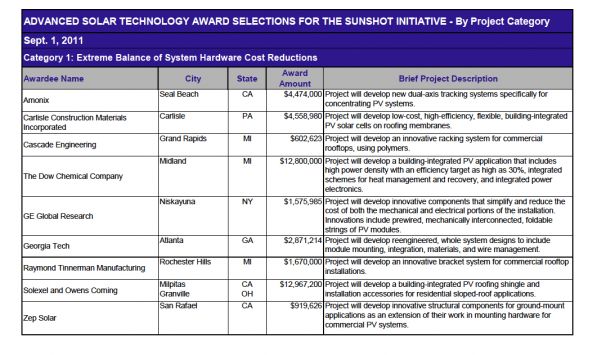
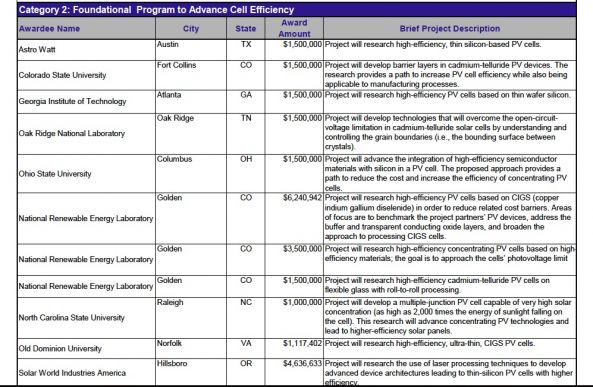

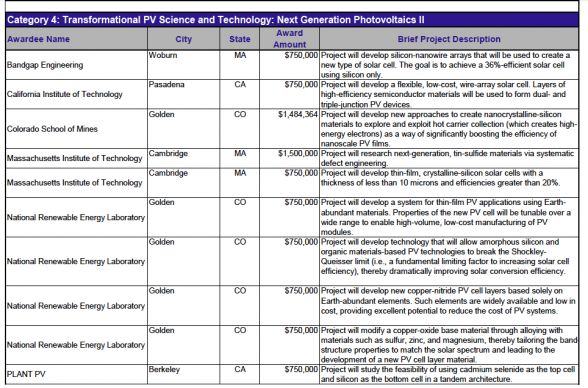
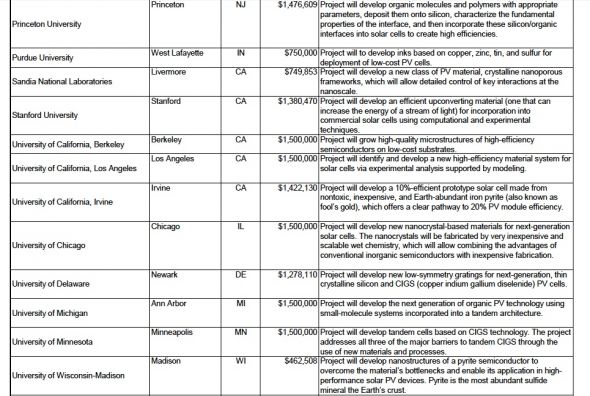
_589_365_80.jpg)
